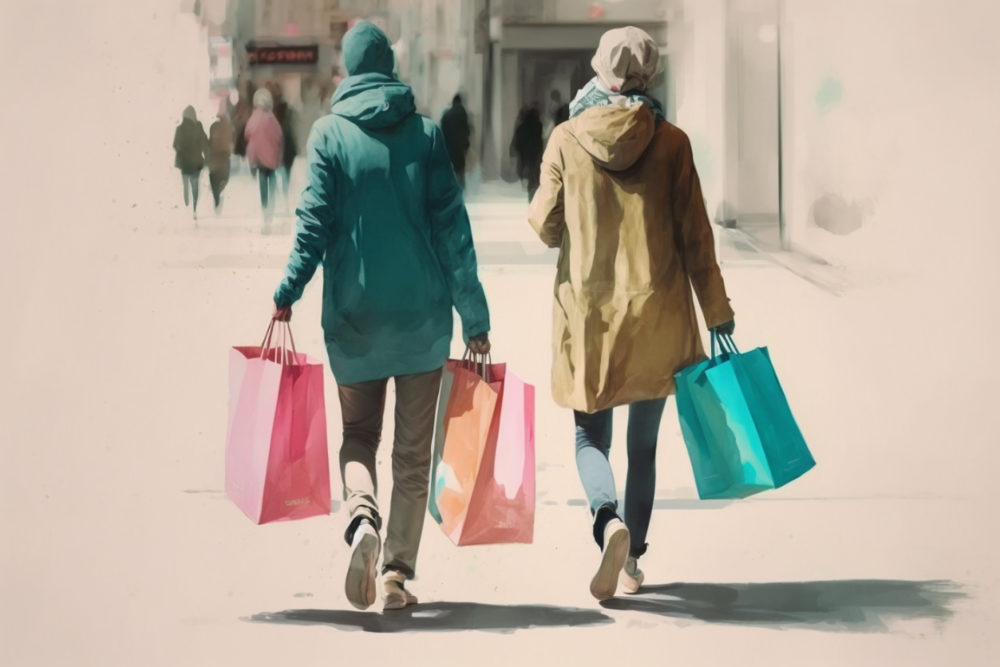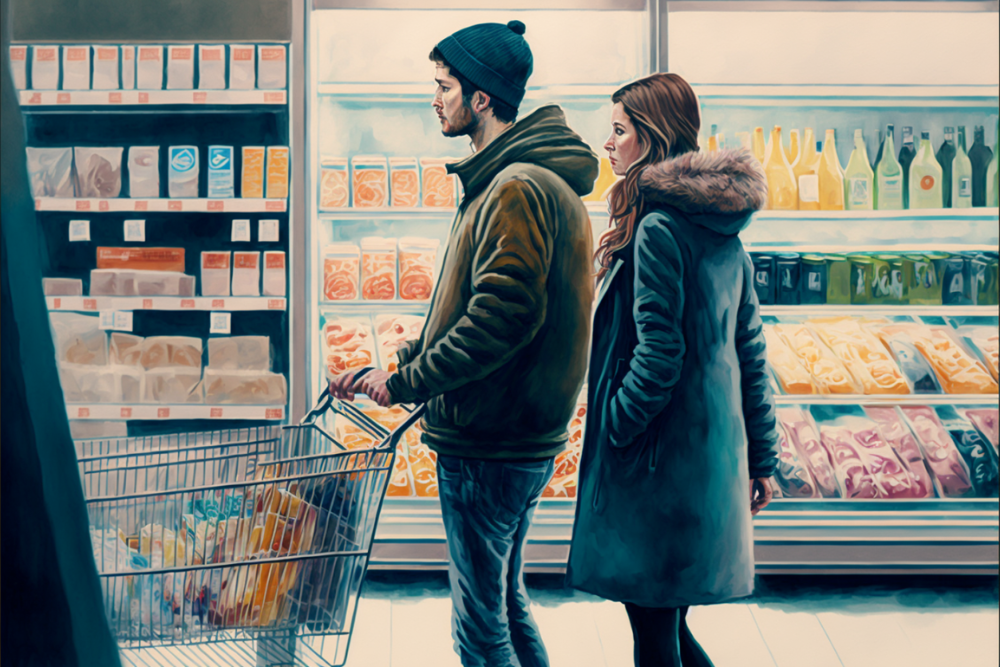The latest generation has forgone traditional credit in the form of a traditional layaway system but built for the digital age. This is known as Buy Now Pay Later or BNPL. Americans are embracing this refresh of a traditional credit system, financing their meals and spreading the payments over six weeks.

What happens when buying a sandwich like this gets normalized? Numerous fintech firms have sprouted to help with BNPL, such as Klarna and Afterpay. They have been able to hook up their platforms to the world of e-commerce and allow people to pay for anything and everything with a buy now, pay later mentality. Whether you’re buying a smoothie or a workout machine, BNPL has become a more popular option. After all, it requires a minimal check on their credit, and they can have the item and consume it for a fraction of the cost.
In fact, in recent years, between 2019 through 2021, buy now pay later grew 1000+ percent, raising from a modest $2 billion in loans to just over 24 billion. While it’s still small compared to credit cards, it’s becoming a vastly popular choice. Half the people using BNPL as a payment option are 33 or younger.
Marco Di Maggio, a Harvard economist, said, “Many people using BNPL have forgone using a credit card or don’t even have one, to begin with.” He believes this comes from the fallout of the financial crisis in 2008, where these children watched their parents suffer through debt. As a result, personal debt is something to be looked at negatively, and even the Consumer Financial Protection Bureau often warns against using too much credit.
A marketing professor from the University of Arizona, Anastasiya Ghosh, has said that “borrowers that are younger have grown up to believe that debt with credit cards is inherently a negative thing.” She runs research to find out what payment method makes consumers feel guilty.
She went on to say that “Credit cards get the most amount of guilt”. Yet the research also showed that BNPL and debit evoked no emotions or moral qualms. Ghosh believed that BNPL would be used for the outliers and items of luxury but found that it was used for food purchases and groceries which she said “was completely unexpected.”
Di Maggio chimed in and said that “Younger people feel that BNPL have a sense of freedom behind them, while older generations see those that use it as a financial problem.” The younger consumers feel that credit cards are a form of ongoing debt, with high-interest rates forcing people to always be in a constant state of payment. This is how profit is made from interest fees. Yet BNPL typically has a six-week cycle to pay off the whole amount and can come in at a zero percent interest charge. The fees are offset because the fees directly go to the merchant, which is up to four times as high as credit card processing fees.
Social media plays a part in shaming credit cards, where people use these channels such as TikTok or Instagram to show how they got themselves out of credit card debt. This, of course, leads to tags such as #Afterpay becoming popular, which already has over 1.5 million posts on Instagram itself. So-called lifestyle Gurus that have their home on TikTok help to push this new type of consumption through BNPL.
It’s becoming viral sensations, as the concept of BNPL comes at a zero percent interest charge, equating to basically free money. Even if it’s for daily consumables, the younger population seems unfazed. Even TikTok influencers showcase they have the funds to pay upfront but still care to “Afterpay everything, regardless of the amount.” It helps them grow their views as well.
Another influencer, John Liang, with over 2 million followers, tries to put reason behind using BNPL for everything. For example, he can pay a small portion for an item while investing the rest and making a better return.
Di Maggio, when presented with this reasoning, quickly stated that economics don’t make any sense. Investments won’t produce relevant returns within that short a time frame. Also, these can be small amounts too that people won’t normally consider putting into a stock or other investment product. Instead, they’ll most likely spend that smaller amount on another item.
In fact, he goes on with a study he helped write that states BNPL actually increases spending habits by an additional $60 per week. Speaking of studies, those BNPL companies that report on-time credit payments to credit agencies may inadvertently make these people look creditworthy for financial institutions. However, when they get credit, Di Maggio stated, “those that get conventional loans due to good payment terms with BNPL tend to default more often, or not pay on time.”
Also, BNPL delinquency rates have skyrocketed, destroying the value of BNPL companies.
Part of the rise of fintech firms is that they primarily work to cover a portion traditional financing didn’t cover properly. Whether it’s unbanked or underbanked, these companies are there to help provide them with similar financial products and access.
Yet, at the same time, they are also financial products that don’t have to follow strict regulations like the Truth in Lending act. That leads to minimal to no protections for the consumers and leads to poor financial behaviours to simply pay off the BNPL when it’s due, even at the cost of overdraft fees or a reduction in critical savings.
Also, the real truth is that there are still many BNPL firms that aren’t reporting on-time payments, meaning your credit score won’t always improve. Di Maggio adds to this saying, “There’s simply debt not being recorded, nor payments on that debt.”
While it may have seemed that companies such as AfterPay or Klarna were meant to disrupt the issues banking provides, in fact, they are causing the potential next credit crisis. Just as there was a credit crisis with young credit card users in the past, now those that use BNPL 25 and under are still showing high levels of missed payments and defaults. This was for credit that was easy to get, meaning it would only get harder with more traditional methods down the line.
There’s already a small group of influencers online trying to “explain just how bad BNPL is and to never use it.” That’s most likely due to the fact that it’s still debt, it just looks different but acts the same as the old debt, and people need to be made aware.





